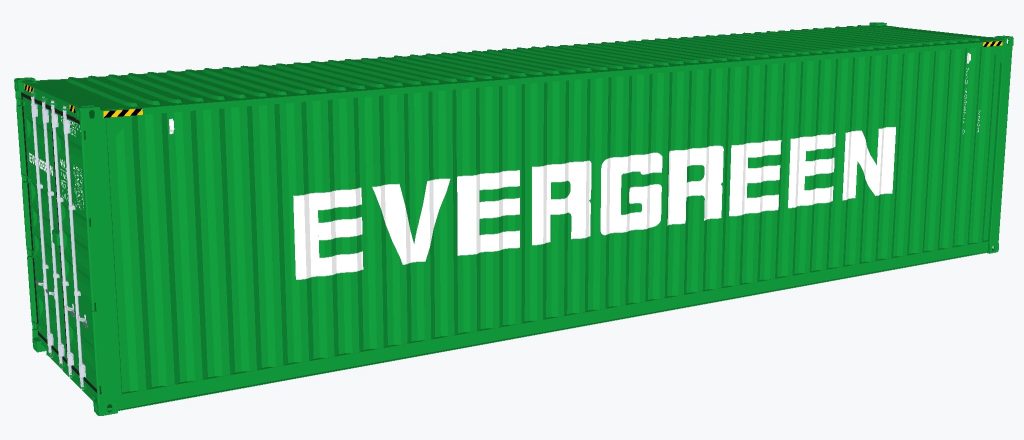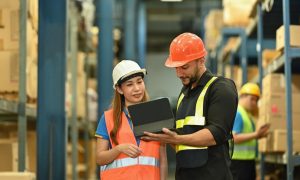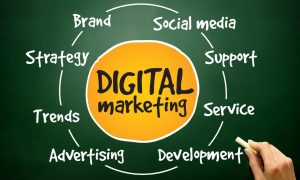When discussing creating a sustainable future, few things matter more than how we handle our waste. I’ve spent years working with businesses and individuals on sustainability projects, and one truth consistently emerges: Waste management directly impacts everything from our local environments to global climate patterns.
Last year, I visited a community in Portland that reduced their landfill contributions by 65% through simple changes in their waste habits. Their success wasn’t from grand initiatives but from consistent daily practices anyone can adopt. The community members I spoke with weren’t environmental activists—they were regular people who saw an opportunity to make their neighborhood better. Let’s explore the practices that make the biggest difference.
Landfill Disposal
When waste sits in landfills, it produces methane—a greenhouse gas far more potent than carbon dioxide. Additionally, as materials break down, they can release harmful chemicals that seep into soil and water supplies.
Modern landfills have improved with better liners and gas collection systems, but they’re still not a sustainable long-term solution. Landfills consume valuable land, create potential health risks for nearby communities, and waste resources that could be reused.
The economics of landfills are also problematic. Many municipalities are running out of landfill space, leading to higher disposal costs. In my conversations with city waste managers, I’ve repeatedly heard about the struggle to balance budgets while landfill fees continue to rise.
The most progressive communities are working to extend the life of existing landfills while developing alternatives that divert waste from these sites altogether. This isn’t just environmental protection—it’s smart resource management.
Waste Prevention

When I renovated my office space two years ago, I worked with contractors who specialized in minimal waste construction. The difference was remarkable—we generated about 75% less construction waste than typical projects of similar size.
Waste prevention requires thinking differently about consumption. Before purchasing products, consider their entire life cycle. How long will this item be useful? What happens when it’s no longer needed? Can it be repaired rather than replaced?
For businesses, avoiding waste more often than not saves them money. Businesses that implement waste avoidance actions typically discover inefficiencies in their operations that, if fixed, improve their bottom line. One of my clients in manufacturing saved over $50,000 annually by repackaging products to use less material.
For households, waste prevention might include:
- Choose products with minimal packaging.
- Buying durable goods rather than disposable alternatives.
- Repairing items instead of replacing them.
- Using digital options instead of paper when possible.
- Planning meals to reduce food waste.
The waste we never create doesn’t need to be managed, making prevention the most effective strategy in any waste management plan.
Recycling and Reusing
Recycling transforms waste materials into new products, conserving raw materials and reducing energy consumption. Despite its benefits, recycling rates in many regions remain disappointingly low. Part of the problem is confusion about what can be recycled and how to do it properly.
I’ve found that communities with simple, consistent recycling guidelines and convenient collection systems achieve much higher participation rates. Education makes a tremendous difference—when people understand the impact of their recycling efforts, they’re more likely to participate.
Recycling aluminum cans saves up to 95% of the energy required to produce new aluminum from raw materials. Paper recycling saves trees and water. Plastic recycling keeps these long-lasting materials out of our oceans and natural areas.
Reuse goes even further than recycling by extending the life of products in their current form. From refillable containers to second-hand markets, reuse systems keep perfectly good items in circulation. I’ve furnished much of my home office with quality second-hand furniture that would otherwise have ended up in landfills.
The reuse economy is growing rapidly, with online marketplaces making it easier than ever to find new homes for unwanted items.
Anaerobic Waste Digestion
This process uses microorganisms to break down organic materials in an oxygen-free environment, producing biogas that can be used for energy and nutrient-rich digestate used as fertilizer.
I toured an anaerobic digestion facility in Seattle last spring and was amazed by its efficiency. Food waste from restaurants and grocery stores that would have gone to landfills was instead used to produce enough energy to power hundreds of homes.
This technology is particularly valuable for food waste, agricultural residues, and sewage sludge. The process captures methane that would otherwise enter the atmosphere as a potent greenhouse gas and instead uses it as a renewable energy source.
Anaerobic digestion is increasingly being embraced by municipalities as a core component of integrated waste management systems. With the double benefits of energy production and waste reduction, this approach is especially appealing for municipalities that strive for sustainability goals.
Incineration
While controversial, more recent sophisticated incineration technologies have achieved significantly improved environmental performance compared to earlier systems.
Modern incinerators have sophisticated pollution control devices that remove toxic gases before they are released into the air. Power or district heat is provided by energy generated by burning waste to nearby communities.
Incineration compresses waste volume by as much as 90%, taking up significantly less landfill space for the resulting ash. Yet, it should be noted that incineration should complement, not substitute for, recycling efforts. Waste materials that can be recycled must be recycled, with incineration being used only for non-recyclable materials.
The debate around incineration highlights the complexity of waste management decisions. Communities must weigh factors like local energy needs, existing infrastructure, and environmental priorities when considering incineration as part of their waste strategy.
Waste Reduction
Waste reduction differs from waste prevention in that it concentrates on efficiency rather than entirely eliminating waste. In my business consulting, I’ve helped companies implement waste reduction strategies that start with waste audits. These assessments identify where waste is generated and recommend specific actions to reduce it. One restaurant client reduced their waste by 40% simply by tracking what was thrown away and adjusting purchasing and preparation accordingly.
Manufacturing waste minimization often involves redesigning products to reduce materials use without affecting quality. For consumers, waste minimization can involve buying concentrated products, buying in bulk to reduce packaging, or purchasing products with little packaging.
Digitalization offers immense potential for reducing waste. Moving from paper-based to digital systems not only saves trees but often improves efficiency and reduces costs.
Waste reduction represents a mindset shift from the traditional “take-make-dispose” model to a more circular approach where materials maintain their value throughout their life cycle.
Composting
Composting diverts materials like food scraps and yard waste from landfills while creating a product that enriches soil and reduces the need for chemical fertilizers.
I started composting in my backyard about five years ago, and the difference in my garden has been remarkable. Plants grow stronger, require less water, and produce more abundantly in compost-enriched soil. What would have been waste instead becomes a resource that completes a natural cycle.
Composting options range from simple backyard bins to community composting programs and large-scale municipal operations. Even apartment dwellers can participate through vermicomposting or by supporting local food waste collection programs.
Donate and Repurpose Items

Donation extends the useful life of goods while helping others. From clothing and furniture to electronics and building materials, many items we no longer need can benefit someone else.
Repurposing—using items in new ways—keeps materials out of the waste stream while often creating something unique and valuable. I’ve seen wooden pallets transformed into garden planters, glass jars repurposed as storage containers, and textile scraps woven into new products.
The evolution of the “upcycling” phenomenon, where waste materials are reworked into products of greater value, demonstrates the material ingenuity that we could otherwise squander. This process not only conserves waste but frequently creates economic prospects in the guise of small businesses and artisanal enterprises.
Organizations that accept donations include traditional thrift stores, nonprofit organizations, schools, community theaters, and material reuse centers. Many of these organizations offer pickup services for larger items, making donations convenient even for bulky goods.
Educate and Involve Your Community
Community involvement in the neighborhood can also include holding a neighborhood clean-up day, litter reduction contest, or shared activity such as neighborhood gardens utilizing local compost. They encourage social bonds with bettered surroundings.
Schools are important agents of waste education. Children who learn sustainable practices at school often extend these practices to home, altering family behaviors. Composting and recycling at school offer concrete learning experiences while minimizing institutional waste.
Business engagement is equally important. Companies can implement internal waste reduction programs while supporting community activities through sponsorship or volunteer activities. When companies demonstrate a commitment to sustainability, they are likely to encourage customers and competitors to do the same.
Conclusion
Creating a sustainable approach to waste isn’t about perfection—it’s about progress. Each step we take toward better waste management contributes to environmental protection, resource conservation, and community well-being.
From waste prevention and recycling to composting and community education, we have many tools to address our waste challenges. The most effective approach combines these strategies into comprehensive systems that maximize resource recovery and minimize environmental impact.
As individuals, our daily choices matter. Changing consumption patterns, recycling correctly, composting household waste and lawn clippings, and urging reduction efforts assist in developing solutions outside of us.
ALSO READ: What are the Key Challenges and Effective Strategies for Achieving Retail Success?
FAQs
Waste prevention is always the most environmentally friendly approach, followed by reuse, recycling, composting, anaerobic digestion, and waste-to-energy. Landfilling should be the last resort.
Businesses should start with a waste audit to identify major waste streams and then implement targeted reduction strategies. This might include redesigning packaging, digitizing records, implementing recycling programs, or finding markets for byproducts.
While recycling capabilities vary by location, common non-recyclables include soiled paper products, certain plastic films, ceramics, mirrors, and items made from mixed materials that cannot be easily separated.
Waste management impacts climate change through methane emissions from landfills, carbon dioxide from incineration, and the energy used to produce new materials rather than recycling existing ones. Good waste management can significantly reduce greenhouse gas emissions.
Compostables break down to nutrient-rich soil amendments in optimal composting environments, generally over a designated timeframe. Biodegradable simply suggests the item will ultimately break down into smaller units, but nothing that it will become good compost or dictate for how long.



